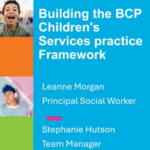by Brigid Featherstone, Professor of Social Work, The Open University and Paul Bywaters, Emeritus Professor of Social Work, Coventry University
The Department for Education (DfE) published key statistics last week on the care population, identifying changes in the rates of children and young people being looked after in the care system, being adopted and other outcomes for 2013-14. Changes in the format of the commentary make these important statistics more accessible.
The government’s press release accompanying the statistics focuses solely on the 5000 children adopted in 2013-14: ‘Record number of children adopted’. This focus on a tiny minority is of concern when set against the fact that almost 100,000 children spent some time in the care system last year. It is also of concern that adoption appears to be so central to the policy agenda and this raises serious ethical and legal concerns.
The exceptional pressures faced by children’s services against a background of unprecedented cuts to LA budgets have meant that levels of support to families experiencing deprivation have been cut dramatically across the country. The promotion of adoption in such a context can mean that disadvantaged families are losing their children permanently without having been offered the appropriate resources to ensure they could care for them safely.
As Sir James Munby noted, in the Re B-S (Children) [2013] EWCA Civ 1146, case, orders contemplating non-consensual adoption – removing parental rights against their will – are a very extreme measure, a last resort only to be made when nothing else will do. Moreover, there is a well-established principle from both the 1989 and 2002 Children Acts that the court should start from the least interventionist approach. Prevention through supporting families is the approach enshrined in the Universal Declaration of Human Rights and the Convention on the Rights of the Children.
It would appear that the Re B–S case is having an impact as behind the DfE headline lies a less well trumpeted set of statistics suggesting a fall in the numbers of children placed for adoption last year.
More importantly, this focus on adoption masks key lessons contained within this data.
The data begins with a map showing the extreme variations in children’s chances of being in the care system, depending on where they live. This is a new departure. It shows that approximately one child in 500 in Wokingham or Richmond Upon Thames was being ‘looked after’ at the end of March 2014, but approximately one child in 65 in Blackpool and one in 75 in Wolverhampton. With individual differences, this reflects a North/South divide with over 80 children in 10,000 being looked after children (LAC) in the North East and North West, but only around 50 children per 10,000 in London, the South East and the South West.
However, by describing the differences simply as variations the commentary and particularly the accompanying government press release obscures key issues in relation to deprivation and inequality. Thus fundamental questions which require urgent and dispassionate investigation are left un-addressed.
The key omission is the failure to relate children’s chances of being a LAC to levels of area deprivation. There is a very strong correlation between the level of deprivation in a local authority (LA), measured by the Index of Multiple Deprivation, and a child’s chance of being looked after, as is widely known.
Because the commentary only talks about ‘variations’ between LAs not ‘inequalities’, it obscures the impact of disadvantage on families and communities.
Without controlling for deprivation, it can be difficult to make sense of the data. The most glaring example of this is the commentary on the ethnic breakdown of the LAC population. The commentary (rightly) says that the proportion of white children who are looked after roughly reflects their proportion in the population. But as recent Coventry University research has shown, if you control for the level of deprivation of the neighbourhood in which children live, the picture is very different.
When you compare like with like, white children are up to 6 times more likely to be LAC than Asian children and over 50% more likely than Black children. These huge inequalities in children’s chances of facing the serious adverse experiences which lead to care are going largely unrecognised and are under-researched.
The commentary also doesn’t remark on the very high levels of volatility in the system at the level of individual LAs. While the crucial relationship with deprivation is seen every year, the LAC rate has gone up by as much as 80% in five years in a couple of LAs, while falling by a third or more in some others. Detailed analysis would be necessary to understand these variations.
When the average cost of a looked after child is £50,000 per year there are strong financial as well as human and moral reasons for conducting such analysis. Moreover, it is also important to note that we cannot be sure whether children’s wellbeing is better protected if rates are going up or going down and this constitutes a further topic for research.
Overall, we would argue for the importance of more rigorous and extensive research and caution against an overly ideological approach to what after all is an area of welfare affecting the lives of present and future generations.



 Bournemouth, Christchurch and Poole
Bournemouth, Christchurch and Poole  Hampshire County Council
Hampshire County Council  Oxfordshire County Council
Oxfordshire County Council  South Gloucestershire Council
South Gloucestershire Council  Wokingham Borough Council
Wokingham Borough Council  Webinar: building a practice framework with the influence of practitioner voice
Webinar: building a practice framework with the influence of practitioner voice  ‘They don’t have to retell their story’: building long-lasting relationships with children and young people
‘They don’t have to retell their story’: building long-lasting relationships with children and young people  Podcast: returning to social work after becoming a first-time parent
Podcast: returning to social work after becoming a first-time parent  How managers are inspiring social workers to progress in their careers
How managers are inspiring social workers to progress in their careers  Workforce Insights – showcasing a selection of the sector’s top recruiters
Workforce Insights – showcasing a selection of the sector’s top recruiters  Unlocking independence: how ASDAN gives care leavers choice and control over their future
Unlocking independence: how ASDAN gives care leavers choice and control over their future 

 Facebook
Facebook X
X LinkedIn
LinkedIn Instagram
Instagram
Good points well made. Adopters of some yrs have always been concerned that some children will go on to be adopted before enough was done to make sure that particular road to family life was taken in the child’s best interest. We too have real concerns that the push to make adoptions quicker may well lead to insufficient help to be given to the birth family to be good enough parents. For those where permanence in adoption is in their best interests, where neglect, abuse ,birth parents lifestyles that are almost certain to put their children at significant risk , do need to be completed in a a child’s timeframe .
Research probably is the answer to discover the true facts but interestingly I have recently found that their is already a wealth of good research on children on the edge of care, a plethora of research about LAC and virtually none about adoption. To balance it up that needs to change .
Very interesting article, much more research is urgently required on thethe effects on children’s wellbeing before, during and after their experiences of the care system, including adoption. But we must not lose sight of the imperative that we provide support to failing families to minimise the chances of their children becoming exposed to substitute care. Early intervention is important but ANY intervention must be effective and, above all, supportive interventions MUST BE available, across LAs.
Could you provide links to the other statistics please?
Hi Richard, there is a hyperlink attached to the word ‘statistics’ in the first line you can follow.
I will also post the link for you here: https://www.gov.uk/government/uploads/system/uploads/attachment_data/file/359277/SFR36_2014_Text.pdf
My own search has found statistics referred to in the article here:
Children looked after in England, including adoption: https://www.gov.uk/government/statistics/children-looked-after-in-england-including-adoption
Local authority tables: https://www.gov.uk/government/uploads/system/uploads/attachment_data/file/359082/SFR36_2014_LA_tables.xlsx